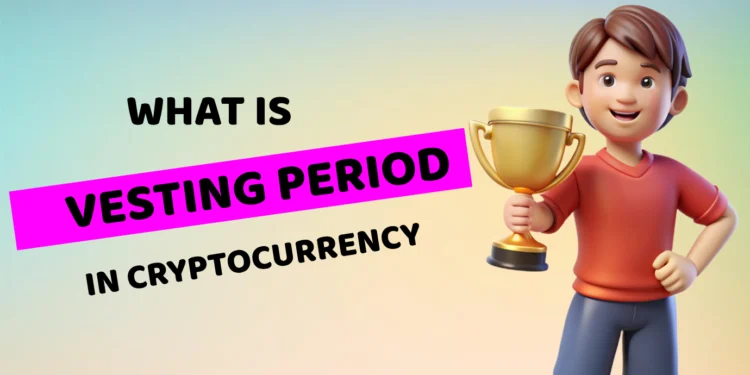In the world of cryptocurrency, vesting refers to a process where tokens or coins are gradually unlocked over a set period, rather than being made available all at once. This mechanism is designed to ensure long-term engagement and stability, primarily for team members, early investors, or other stakeholders. By staggering the release of tokens, vesting prevents the market from experiencing sudden sell-offs that could negatively affect the token’s price.
How Does Vesting Work?
When a token or cryptocurrency is subject to a vesting schedule, it means that the holder cannot access or trade the entire amount right away. Instead, the tokens are “locked” and are gradually made available to the holder over time. This gradual release helps promote long-term participation and ensures that key stakeholders remain invested in the project’s success.
For example, if a project grants an investor 100,000 tokens with a 2-year vesting schedule, they might only receive 10,000 tokens initially, with the remaining tokens being released in portions over the next 24 months. This system discourages early participants from dumping large amounts of tokens all at once.
Types of Vesting Schedules
There are several types of vesting schedules commonly used in cryptocurrency projects:
- Cliff Vesting: This type of vesting sets a specific period (the “cliff”) during which no tokens are released. After the cliff period ends, a portion or all of the locked tokens are released. For example, in a project with a one-year cliff, no tokens would be available for the first year, but at the end of that year, a significant percentage (or even all) of the tokens might be unlocked.
- Linear Vesting: Linear vesting unlocks tokens in equal portions over time. Instead of waiting for a specific date, token holders receive small portions of their tokens at regular intervals (e.g., monthly or quarterly) until all the tokens are fully unlocked. For example, if 120,000 tokens are vested over two years, the holder might receive 5,000 tokens every month until the full amount is unlocked.
- Milestone-Based Vesting: In this model, tokens are unlocked based on specific project achievements rather than time alone. These milestones could include product launches, user growth targets, or reaching revenue goals. This method ensures that token holders only receive their tokens as the project progresses.
Why is Vesting Important?
Vesting is crucial for the long-term sustainability of a crypto project for several reasons:
- Promotes Long-Term Commitment: Vesting ensures that the project’s core team and early investors stay involved for the long haul. By gradually unlocking their tokens, they are motivated to remain committed to the project’s success.
- Reduces Risk of Market Dumping: When large holders receive all their tokens at once, there’s a risk they could sell them quickly, causing a massive price drop. Vesting spreads out token distribution, lowering the chance of a sudden price crash.
- Stabilizes the Token Market: Gradual token releases can help stabilize a token’s price and reduce market volatility. With fewer tokens entering the market at once, the supply-demand balance is more controlled.
Example of Vesting in a Crypto Project
Let’s take a hypothetical cryptocurrency project that launches with a total supply of 100 million tokens. The token distribution plan includes:
- 20 million tokens allocated to the development team, with a 4-year vesting schedule and a 1-year cliff.
- 10 million tokens allocated to advisors, with a 2-year linear vesting schedule.
- 5 million tokens allocated for community rewards, released over 1 year.
For the development team, none of the tokens are accessible for the first year due to the cliff. After the one-year period, 25% of their tokens are unlocked, and the remaining 75% are gradually released over the next three years. This setup ensures that the team stays motivated and aligned with the project’s long-term goals.
The advisors, on the other hand, receive their tokens through linear vesting. For example, their tokens might be released every month over two years, so they receive equal portions regularly until the vesting period ends. This ensures a controlled and steady release of tokens into the market.
Vesting in Airdrops
Vesting can also apply to airdrops—free distributions of tokens to early supporters or participants. Rather than distributing all the tokens immediately, projects can use a vesting schedule to release tokens gradually over time. For example, a project might airdrop 50% of the tokens immediately and vest the remaining 50% over six months. This approach keeps users engaged with the project while preventing them from selling all their tokens at once.
Vesting is an essential mechanism in cryptocurrency that promotes stability, encourages long-term involvement, and helps safeguard a token’s value. By gradually releasing tokens over time, vesting aligns the interests of project stakeholders, from developers to investors, and reduces the likelihood of market disruption caused by sudden large-scale sales.
Whether applied to team members, advisors, or airdrop participants, vesting ensures a responsible and structured token distribution process. This not only benefits the project’s long-term growth but also helps maintain a more stable and predictable token market for all participants.




